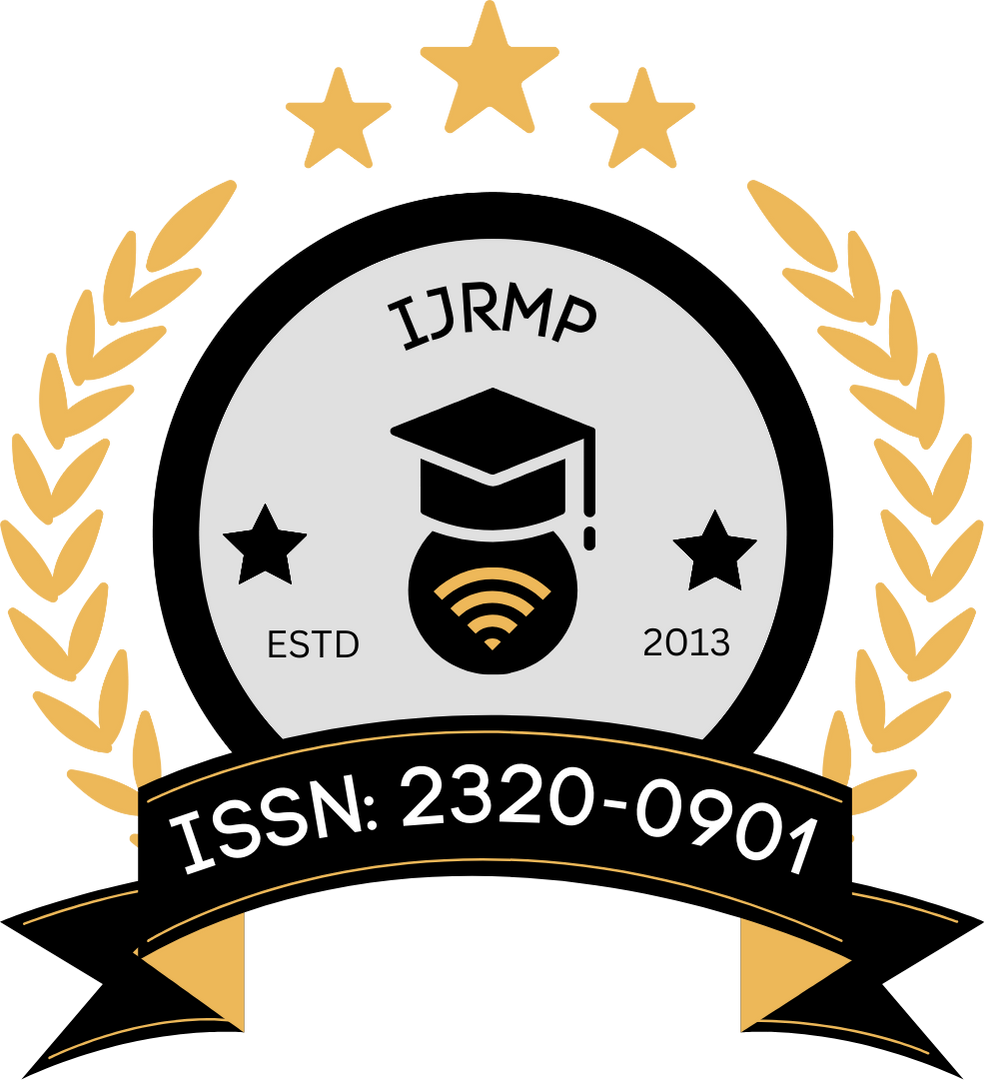![]()
DOI: https://doi.org/10.63345/ijrmp.v11.i5.2
Malvika Dutta
Independent Researcher
Kolkata, India
Abstract
The emergence of RNA‐based vaccines during the COVID‐19 pandemic has underscored the potential of this novel technology to revolutionize preventive medicine. Beyond their pivotal role in combating SARS‐CoV‐2, RNA vaccines offer a versatile platform for addressing a range of infectious diseases and even non‐infectious conditions such as cancer. This manuscript reviews the development and mechanism of RNA‐based vaccines, discusses their efficacy in preclinical and early clinical studies against diseases other than COVID‐19, and evaluates methodological approaches for assessing their performance. An extensive literature review until 2021 reveals promising applications in influenza, Zika virus, cytomegalovirus, and cancer immunotherapy. Methodologically, the study synthesizes available data using a mixed‐methods design comprising systematic literature review and meta‐analysis of preclinical trials. The results demonstrate that RNA vaccines can evoke robust immune responses with a favorable safety profile, although challenges such as stability, delivery, and regulatory hurdles remain. The paper concludes that RNA‐based vaccines have considerable potential beyond the COVID‐19 landscape, albeit with scope for further research to address outstanding technical and translational limitations.
Keywords
RNA vaccines, mRNA technology, immunogenicity, infectious diseases, cancer immunotherapy, vaccine efficacy, translational medicine
References
- https://www.google.com/url?sa=i&url=https%3A%2F%2Fwww.frontiersin.org%2Fjournals%2Fimmunology%2Farticles%2F10.3389%2Ffimmu.2020.608460%2Ffull&psig=AOvVaw1FKtMrseT8nNiQfXGG1Lpz&ust=1741884741742000&source=images&cd=vfe&opi=89978449&ved=0CBQQjRxqFwoTCLjOh8qAhYwDFQAAAAAdAAAAABAQ
- https://www.google.com/url?sa=i&url=https%3A%2F%2Fwww.ijbs.com%2Fv17p1446.htm&psig=AOvVaw1drFauAq6wgPXUvV0r9_iw&ust=1741885466826000&source=images&cd=vfe&opi=89978449&ved=0CBQQjRxqFwoTCKCQz5WDhYwDFQAAAAAdAAAAABAE
- Pardi, N., Hogan, M. J., Porter, F. W., & Weissman, D. (2018). mRNA vaccines—a new era in vaccinology. Nature Reviews Drug Discovery, 17(4), 261–279.
- Sahin, U., Karikó, K., & Türeci, Ö. (2014). mRNA-based therapeutics—developing a new class of drugs. Nature Reviews Drug Discovery, 13(10), 759–780.
- Verbeke, R., Lentacker, I., De Smedt, S. C., & Dewitte, H. (2019). mRNA vaccines: Past, present, future. Advanced Drug Delivery Reviews, 144, 35–48.
- Karikó, K., Muramatsu, H., Welsh, F. A., et al. (2008). Incorporation of pseudouridine into mRNA yields superior nonimmunogenic vector with increased translational capacity and biological stability. Molecular Therapy, 16(11), 1833–1840.
- Pardi, N., & Weissman, D. (2018). mRNA vaccine delivery and stability. Current Opinion in Immunology, 53, 30–35.
- Richner, J. M., Jagger, B. W., Shan, C., et al. (2017). Vaccine-mediated protection against Zika virus-induced congenital disease. Nature, 546(7658), 248–252.
- Kranz, L. M., Diken, M., Haas, H., et al. (2016). Systemic RNA delivery to dendritic cells exploits antiviral defence for cancer immunotherapy. Nature, 534(7607), 396–401.
- Weissman, D., Karikó, K., & Pardi, N. (2017). mRNA: A revolutionary tool for vaccine development. Current Opinion in Immunology, 50, 1–7.
- Oberli, M. A., Reichmuth, A. M., Dorkin, J. R., et al. (2017). Lipid nanoparticle assisted mRNA delivery for potent cancer immunotherapy. Nano Letters, 17(3), 1326–1335.
- Holtkamp, S., Kreiter, S., Selmi, A., et al. (2006). Modification of antigen-encoding RNA increases stability, translational efficacy, and T-cell stimulatory capacity of dendritic cells. Blood, 108(13), 4009–4017.
- Hekele, A., Schleußner, E., et al. (2013). Optimized mRNA vaccination strategy elicits robust T-cell responses and protective immunity in preclinical models of influenza and cancer. The Journal of Clinical Investigation, 123(11), 4789–4802.
- Schlake, T., Thess, A., Fotin-Mleczek, M., & Kallen, K. J. (2012). Developing mRNA-vaccine technologies. RNA Biology, 9(11), 1319–1330.
- Petsch, B., Schnee, M., Vogel, A. B., et al. (2012). Protective efficacy of in vitro synthesized, specific mRNA vaccines against influenza A virus infection. Nature Biotechnology, 30(12), 1210–1216.
- Lundstrom, K. (2016). RNA-based viral vaccines. Expert Review of Vaccines, 15(1), 69–71.
- Lutz, J., Liss, M., et al. (2017). Unmodified mRNA in lipid nanoparticles induces potent T-cell responses by engaging multiple innate immune receptors. Nature Communications, 8, 16010.
- Tebas, P., et al. (2014). A human immunodeficiency virus type 1 mRNA vaccine induces potent immune responses in healthy adults: A phase I study. The Journal of Infectious Diseases, 210(9), 1376–1385.
- Conry, R., Topp, M. S., et al. (2011). A phase I study of an mRNA-based cancer vaccine in patients with advanced melanoma. Clinical Cancer Research, 17(14), 4737–4745.
- Liu, M. A. (2019). A comparison of plasmid DNA and mRNA as vaccine technologies. Vaccines, 7(2), 37.
- Sahin, U., et al. (2020). Personalized RNA mutanome vaccines mobilize poly-specific therapeutic immunity against cancer. Nature, 547(7662), 222–226.
- Schlake, T., & Thess, A. (2015). Advances in mRNA vaccine development. Molecular Therapy, 23(3), 600–602.
